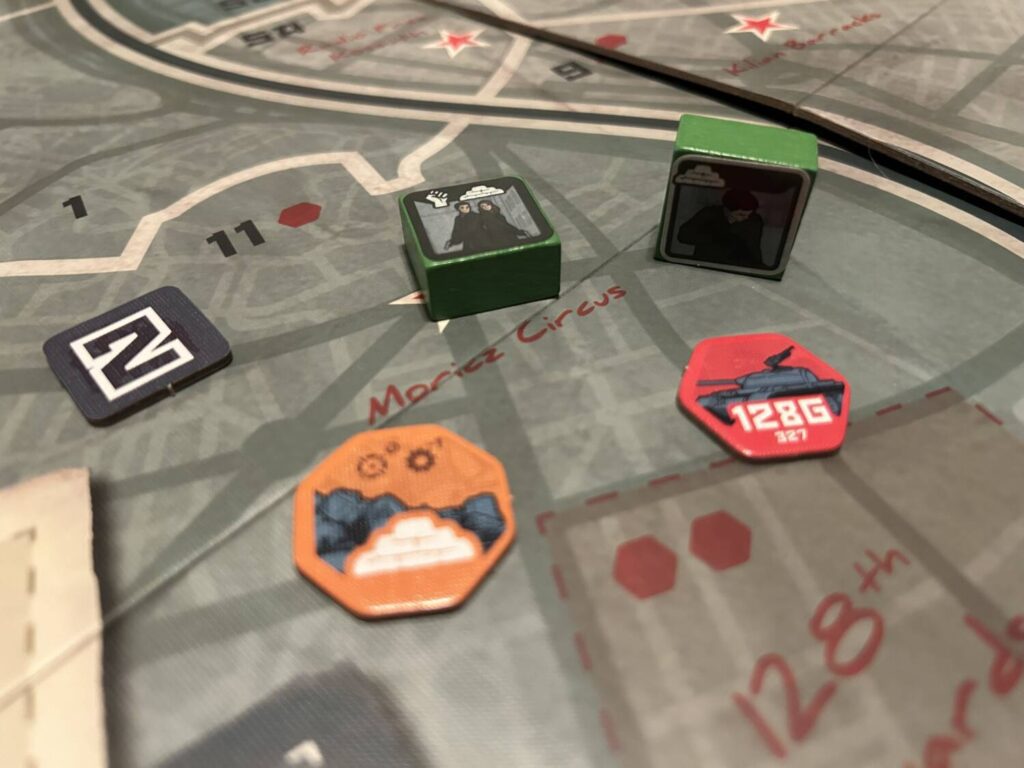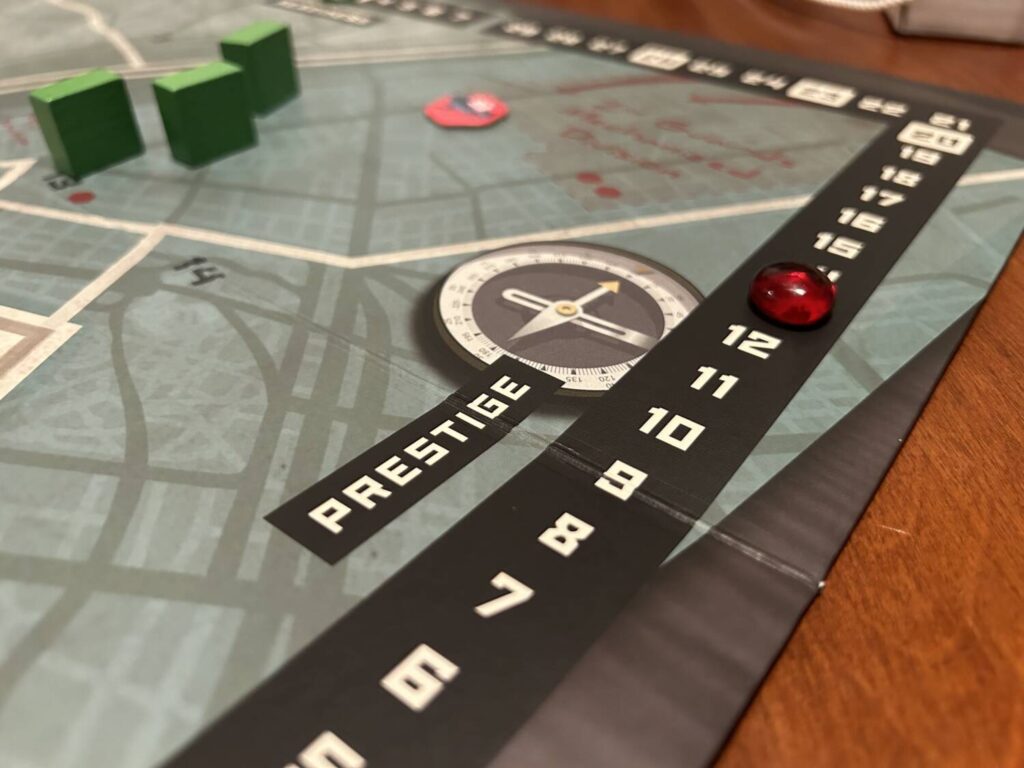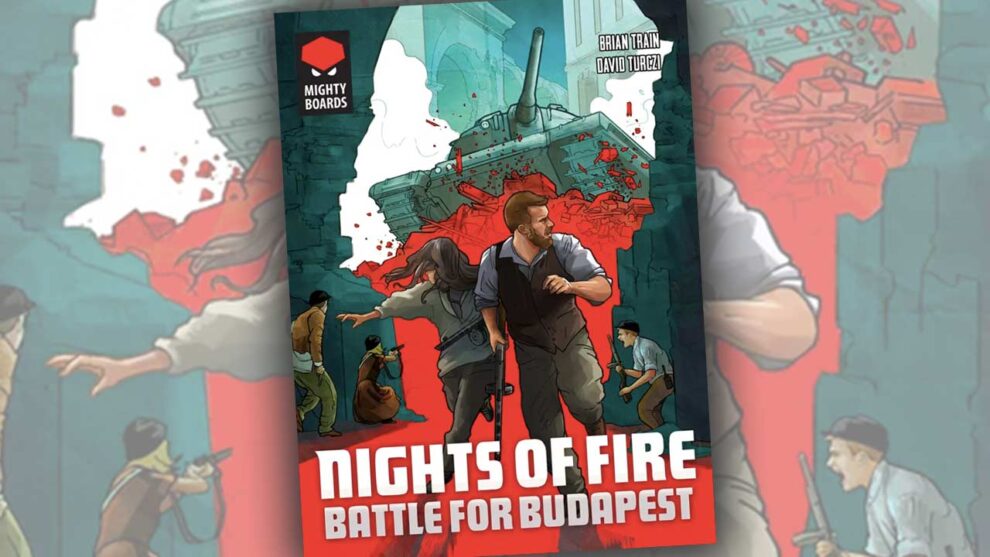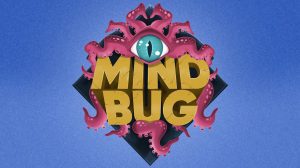Nights of Fire is a block wargame, a genre that seems by and large to have fallen out of style. Was it ever in style? I actually don’t know the level of relative ubiquity block wargames achieved.
It seems like a great format. Units are printed on one side of chunky wooden blocks, and typically angled so that a player knows their own units without knowing anyone else’s. Block wargames incorporate bluffing, memory, and dramatic reveals, which are all good things. I feel like blocks should be a fixture of game design. Maybe the problem is that, outside of Stratego, they’ve seldom been attached to approachable games.

Nights of Fire: Battle for Budapest, the second game in a Hungarian Revolution diptych from designer Dávid Turczi and publisher Mighty Boards, aims to address that. While Days of Ire: Budapest 1956 focused on the initial uprising within a Pandemic-style cooperative game, Nights of Fire depicts the blowback as block wargame, pitting Hungary’s meager guerrilla forces against the full might of the Soviet military.
Much like Days of Ire, Nights of Fire has a solo mode, a cooperative mode, and a competitive mode. The default is for all involved to play as the Hungarian resistance, which isn’t looking to win so much as it’s trying to lose as slowly as possible. In the competitive mode, one player dons the bald cap of Ivan Konev, Commander of the Warsaw Pact Armed Forces.
Phase
The ultimate goal of the game is for the Soviet player to crush the revolution, or for the Hungarians to hold on for all ten rounds. It is both historically and ludographically more likely that the Soviets will emerge victorious, so even that is on a relative scale. Soviet Prestige is tracked throughout the game, and, assuming the game doesn’t make it to the end of the 10th round, the ultimate outcome hinges on where the Prestige ends up. If the Revolution does well enough in their fight, they may be quashed, but the movement lives on.
Each round consists of six phases. The exact contents of each phase vary depending on the mode, and the ruleset. As part of an effort to keep the game approachable, Nights of Fire has advanced rules that can be added when you’re ready.
During the draw phase, the Revolutionary players refresh their hands.

In the tactics phase, you either deal out the AI cards that will control Konev’s actions that round, or the Soviet player decides which of their Tactics cards—the cards they use to perform actions—they’re going to reclaim from the previous round. The unused cards go into the Combat deck, which we’ll come back to.
Reinforcements can be deployed by the Revolutionary player(s) during the Reinforcement Phase, discarding a card with the proper icon to place an available block onto the board.
The bulk of each round plays out during the Operations Phase. The Revolutionaries and Soviets alternate taking actions until both sides have passed. Each faction has a variety of actions available to it, along the general lines you’d expect. In the non-Advanced rules, the Revolution can move, evacuate civilians, build barricades, and ambush or openly attack. The Soviets can move, attack, spy, make arrests, and so on. The actions are triggered by spending cards, but the exact mechanisms differ.
For the Revolution, actions cost points. The active player discards between one and three cards with the corresponding action icon, and uses the cumulative value of those cards to pay the cost of the action. The game comes with handy reference sheets for both sides, which keeps the math from getting too difficult.
The Soviet player is more straightforward. They discard one or two cards and perform as many of the listed actions as desired.
In a three-player game, with two Revolutionaries, the Revolution players can also Strategize on each turn, passing one face-down card to their ally.

Making Advanced-ments
The advanced rules add a few thematic touches that I enjoyed. The Revolutionary player can administer field medicine and Defy, which is my favorite action in the game. By revealing a resistance fighter openly, the Revolution can build Momentum, which helps wear down Prestige.
Advanced mode also adds the Soviet Headline cards, which give the Soviet player a round-specific goal. To me, that gives the game direction the basic rules are lacking. The Soviet player has something to aim for, and the Hungarian player has something specific to obstruct. If the Soviets succeed in achieving the task, they get a reward. If the Hungarians stop them from pulling it off, the Hungarians reap the benefits.
Nights of Fire came out in 2019, making its bifurcation of rules into Regular and Advanced a little ahead of the trend. I don’t think it’s necessary. If you’re going to play this game, do it with the full ruleset.

Wrap Up
I haven’t talked much about my feelings towards Nights of Fire yet. That’s partly because, in the process of writing this review, I couldn’t shake the feeling that this game deserves a warmer reception than it found with me. I feel moderately positive towards both games in this diptych, but I don’t have strong feelings. There’s a lesson here: a game can be as well-designed as possible, but that doesn’t mean it has the magic that makes a great game great.
Nights of Fire is more interesting than it is gripping. I appreciate the way the theme is folded into the structure. It’s clever in how it goes about addressing a fundamentally one-sided conflict, and making that feel tense. The problem is, as an experience, Nights of Fire never generates much enthusiasm. Like its sister, I don’t think you’ll be disappointed if you’re drawn to the theme and the genre, but I also wouldn’t go out of my way to pick it up.












Add Comment